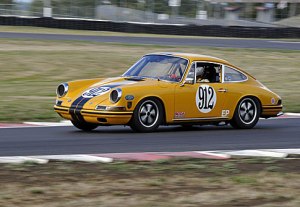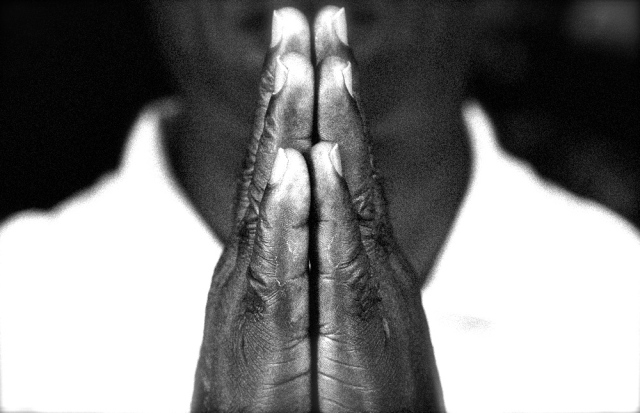by Michael Maciel
As a young man growing up in Reno, I was into sports driving. The Mount Rose Highway, leading up to Lake Tahoe, and the Virginia City Highway, leading (as you might guess) up to Virginia City, were my training grounds. Both were treacherous mountain roads, but they were well-paved and perfect for learning how to master the art of driving fast through turns.
 One hot summer day, I was driving a friend’s 912 Porsche. He was in the passenger seat. We were approaching a hairpin turn on the Mount Rose Highway just above Galena Creek where the road swings around a maintenance station. Anyone can drive through a hairpin turn, but not everyone can drive through one fast.
One hot summer day, I was driving a friend’s 912 Porsche. He was in the passenger seat. We were approaching a hairpin turn on the Mount Rose Highway just above Galena Creek where the road swings around a maintenance station. Anyone can drive through a hairpin turn, but not everyone can drive through one fast.
In a hairpin, you come in high, dive in at the apex, and swing wide as you exit. The object is to maintain speed throughout. Since it was a hot summer day, the tires were sticky on the asphalt, and the 912 (good at any temperature) was taking the corners like it was on rails. Coming up to the turn, I had slowed to 50 mph. My friend Kent said, “Don’t slow down.” I said, “What do I do?” He said, “Just turn the steering wheel.” To my amazement (Porsches are phenomenal in the turns), the car sailed through the hairpin with barely a screech.
 One of the problems that rookie drivers have is “stiff-arming.” It’s when you’re in the middle of a scary turn and your arms stiffen up, as though pushing on the steering wheel will keep the car on the road. It’s a fear response, and it gets a lot of drivers into trouble. No matter how tight the corner, very little pressure is needed to turn the wheel—pushing on it does nothing whatsoever. Once you learn that, driving is a lot less tiring, and it’s more fun.
One of the problems that rookie drivers have is “stiff-arming.” It’s when you’re in the middle of a scary turn and your arms stiffen up, as though pushing on the steering wheel will keep the car on the road. It’s a fear response, and it gets a lot of drivers into trouble. No matter how tight the corner, very little pressure is needed to turn the wheel—pushing on it does nothing whatsoever. Once you learn that, driving is a lot less tiring, and it’s more fun.
Meditation
It takes willpower to meditate. But willpower, as in driving, isn’t stiff-arming; it’s simply turning the steering wheel.
Basic meditation is quieting the mind, or, more specifically, not thinking. You put your attention somewhere other than in your head, you keep it there, and then you just sit. Sounds incredibly exciting, does it not? Nevertheless, that’s what it is, and the benefits of a solid meditation practice are extraordinary. Once you acquire the ability to hold your attention in one place, there are other things you can do, but not until you are able to master this simple task.
While holding your attention in one place is an act of will, it’s not effort-ing—it’s just doing it. When someone told astronaut Jim Lovell that going to the Moon was a “miracle,” he said, “No, we just decided to go.” So it is with holding your attention in one place—you just decide to do it.
When a guru gives a disciple a seemingly mundane task, he’s seeing whether the disciple has the willpower to get it done. If the disciple stiff-arms his way through it, then the guru knows that he has yet to master his will. Spending unnecessary energy doing a job means that there’s resistance going on somewhere inside the disciple’s mind. He hasn’t surrendered to the task. He’s still wondering whether he should, instead of simply turning the steering wheel. If he can’t demonstrate mastery in a mundane project, he won’t be able to meditate.
Stabilize
One of the reasons why Porsches are so good in the corners is that their weight distribution is close to 50/50, meaning that the car’s center of gravity is about halfway between the front and rear wheels. This makes the car very stable. It doesn’t understeer (plow through a turn) nor does it oversteer (spin out). When you’re driving fast, confidence, along with skill and a good vehicle, is everything.
Balance is the root of confidence. It allays fear. Drift far enough away from your center of gravity and your confidence erodes quickly.
 Since the first goal in meditation is to quiet your mind, place your attention on your center of gravity. Ironically, that place is in the area of your belly button. That’s right—your navel. You are going to contemplate your navel. Don’t laugh. It works. In martial arts and Chinese medicine, this area is called the hara. It is the center of your body as well as your center of gravity.
Since the first goal in meditation is to quiet your mind, place your attention on your center of gravity. Ironically, that place is in the area of your belly button. That’s right—your navel. You are going to contemplate your navel. Don’t laugh. It works. In martial arts and Chinese medicine, this area is called the hara. It is the center of your body as well as your center of gravity.
Anatomically, the navel is where the umbilical cord enters the body of the fetus. It is also the point where the aorta branches into the two femoral arteries. If you visualize the umbilicus attaching at this point where the three major arteries converge, you can see that the four blood vessels form a kind of tetrahedron, the first geometric solid. And “solid” is a good place to begin your meditation.
Quieting the mind and stabilizing yourself are essentially the same thing. And, as you will discover, placing your attention anywhere other than inside your head will bring your brain-chatter to a halt. Focusing on the hara has the added benefit of bringing you to a standstill, energetically speaking. It’s like moving to the center of the merry-go-round. It is the centripetal locus of you.
 Paying attention to your breathing focuses your attention on the hara. Proper breathing is diaphragmatic breathing or “belly breathing.” While there are other areas you can focus on, using this as a starting point will teach you how to quiet your mind. Other areas can have more of a centrifugal force and can be very energizing, so unless you have mastered the ability to hold your attention where you decide it should be, your mind will wander all over the place.
Paying attention to your breathing focuses your attention on the hara. Proper breathing is diaphragmatic breathing or “belly breathing.” While there are other areas you can focus on, using this as a starting point will teach you how to quiet your mind. Other areas can have more of a centrifugal force and can be very energizing, so unless you have mastered the ability to hold your attention where you decide it should be, your mind will wander all over the place.
Focusing on the hara gives the term “balanced life” a whole new meaning. This is inner balance, and you want to have it before you venture into higher states of awareness, otherwise you will lose traction. Venturing into areas of higher awareness is venturing into areas of higher energy. Driving through a hairpin turn at 15 mph is a lot different than driving through it at 50. Unless you can hold your attention where you want it, going into those higher areas will send your mind careening off the road. You should see all the “skid marks” on a zendo floor.
Practice
 Meditation is an acquired skill every bit as challenging as sports driving. There are rules. There are techniques. There are hours and hours of practice at different speeds and on different road surfaces. There’s vehicle maintenance to do, check lists to follow, deadweight to eliminate, engines to tune, tires to change—all falling under the category of “preparation.”
Meditation is an acquired skill every bit as challenging as sports driving. There are rules. There are techniques. There are hours and hours of practice at different speeds and on different road surfaces. There’s vehicle maintenance to do, check lists to follow, deadweight to eliminate, engines to tune, tires to change—all falling under the category of “preparation.”
In a meditation practice, diet and exercise are important. Your vehicle has to be in good shape. This is why hatha yoga was developed. It prepares students for the rigors of inner work. Thinking that meditation “just happens,” that anyone can do it if they simply want to is one reason why so many people find it too difficult and give up. Meditation must become the central focus of your life before you begin, not just as a result of having done it.
So, prepare—and then begin.


Excellent.
A deep gassho, Michael
Thank you so much for the masterful incite in to whats become the main course for the rest of my life!